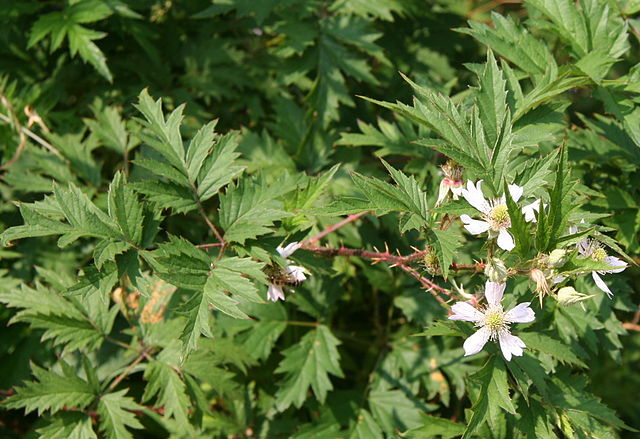Rubus laciniatus
Description
- Deciduous, evergreen shrub (also called evergreen blackberry).
- Its leaves have hairy undersides, are deeply divided with toothy margins, and are comprised of five leaflets.
- Flowers can range from dark pink to white found in clusters of 5 – 20.
- Berries are shiny blackberries when ripe.
- Commonly found on roadsides, disturbed areas, and riparian areas.
Consequences of invasion
- This plant can reproduce both by seed (through the berries) or vegetatively through root fragments.
- Animals and birds can spread blackberry seeds through feces.
Status in the CKISS region
- Cutleaf blackberry is currently classified as Eradicate on the CKISS Annual Priority List.
- Cutleaf blackberry is present in the region with limited distribution, so eradication is feasible.
- CKISS is taking steps to monitor and manage cutleaf blackberry.
Integrated pest management options
Prevention
- Do not plant this species. Learn about Grow Me Instead for native plant alternatives, and become PlantWise.
Mechanical Control
- Hand-pull small, young plants.
- Dig up the root crowns of older plants.
- Cutting thickets low to ground may be required to avoid working near thorny brambles when accessing roots.
- Cutting alone is not as effective as digging, but if repeated continuously over a number of years it can eventually deplete the root reserves of the plant.
- In some cases, grazing by goats has helped control populations.
- Note that birds may nest in blackberry thickets. If this happens on your property, take care to conduct removal activities outside of their nesting period.
Additional resources




